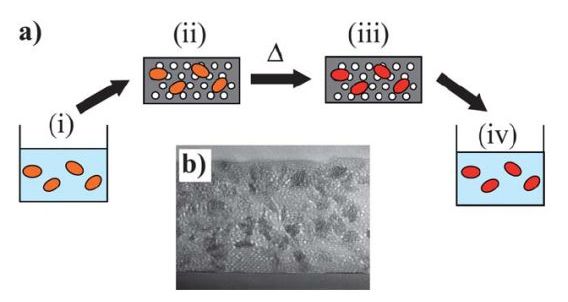Participants :
Isabelle Maurin , Géraldine Dantelle , Jean Pierre Boilot , Thierry Gacoin
J. Mater. Chem. C, 2013, 1, 13–22
ABSTRACT : The development of functional materials by taking advantage of the physical properties of nanoparticles needs an optimal control over their size and crystal quality. In this context, the synthesis of crystalline oxide nanoparticles in water at room temperature is a versatile and industrially appealing process but lacks control especially for “large” nanoparticles (>30 nm), which commonly consist of agglomerates of smaller crystalline primary grains. Improvement of these syntheses is hampered by the lack of knowledge on possible intermediate, noncrystalline stages, although their critical importance has already been outlined in crystallization processes. Here, we show that during the synthesis of luminescent Eu-doped YVO4 nanoparticles a transient amorphous network forms with a two-level structuration. These two prestructuration scales constrain topologically the nucleation of the nanometer-sized crystalline primary grains and their aggregation in nanoparticles, respectively. This template effect not only clarifies why the crystal size is found independent of the nucleation rate, in contradiction with the classical nucleation models, but also supports the possibility to control the final nanostructure with the amorphous phase.

(b) Image MEB d’une couche de silice mésoporeuse contenant des nanoparticules de TiO2.

